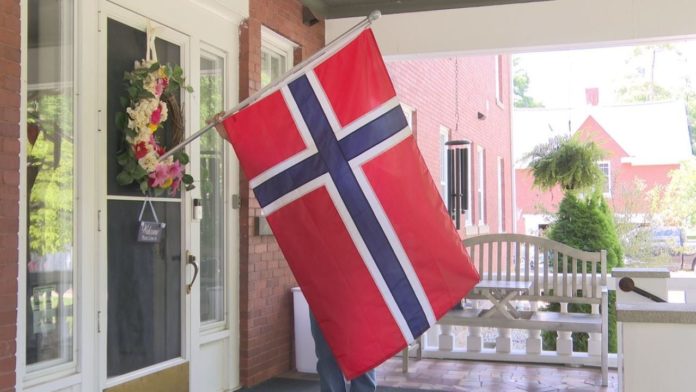Norway’s University of Bergen is funding a study called ‘How Norway Made the World Whiter,’ or ‘NorWhite,’ to answer the pressing question of whether or not white paint helped historically contribute to white supremacy and help to make “the world whiter.”
The question is posed from a historical perspective looking at if, and how, the creation and widespread use of titanium white paint contributed to toxic views of race.
Is white paint racist? Norway’s University of Bergen is exploring that question, asking how the aesthetic of white paint helped the nation contribute to white supremacy and helped “[make] the world whiter.”
“Whiteness is not only a cultural and societal condition tied to skin color, privileges, and systematic exclusion, but materialize everywhere around us,” a rundown of the study read.
“Although Norway is not a conventional colonial power, this project will show how the country has played a globally leading role in establishing white as a superior color,” it said. “Until now, however, this story has been lesser known to scholars and the public.”
The study on whiteness and paint, dubbed NorWhite, observes the Norwegian-developed paint pigment titanium white through “historical, aesthetic, and critical” lenses to determine how the development of the color contributed to “social transformation” as well as how the innovation led to “planetary consequences.”
“Currently the Norwegian innovation TiO2 [titanium dioxide] is present in literally every part of modern life … The primary research question is: What are the cultural and aesthetic changes instigated by titanium white and TiO2 surfaces — and how can both the material in itself and these changes be conceptualized and made visible?” the description asks.
The research project ʻHow Norway Made the World Whiterʼ (NorWhite) studies a Norwegian innovation; the white pigment titanium dioxide in a historical, aesthetic, and critical lens—focusing on how the pigment transformed surfaces in art, architecture, and design. The primary research question is: What are the cultural and aesthetic changes instigated by titanium white and TiO2 surfaces – and how can both the material in itself and these changes be conceptualized and made visible? NorWhite connects challenging topics – whiteness, technological innovation, and mass-exploitation of natural resources – in a single case study. The project will do this through an interdisciplinary research design grounded in an original and creative humanities approach that merges art history and artistic research.
Whiteness is one of today’s key societal and political concerns. Within and beyond academia worldwide, actions of revolt and regret seek to cope with our racial past. In the pivotal works in whiteness studies within art and architecture history, whiteness is understood as cultural and visual structures of privilege. The new research project ‘How Norway Made the World Whiter’ (NorWhite) funded by the Research Council of Norway, addresses, however, a distinctively different battleground for politics of whiteness in art and architecture.
This project will show how Norway has played a globally leading role in establishing white as a superior color. Until now, however, this story has been lesser known to scholars and the public. NorWhite will connect the challenging topics: whiteness, technological innovation, and mass-exploitation of natural resources in a single case study. The research project will study the Norwegian innovations the chemical compound titanium dioxide (TiO2) and the white pigment titanium white in a historical, aesthetic, and critical lens—focusing on how the innovations transformed surfaces in art, architecture, and design—in order to show how aesthetic—and thereby societal—transformation is driven by technological development.


